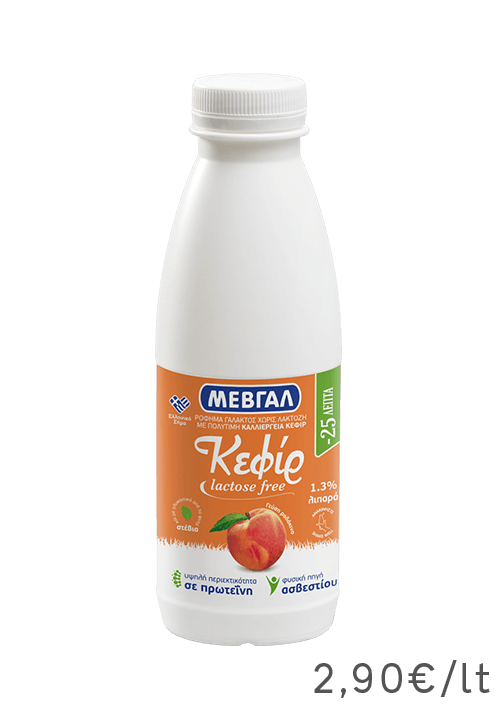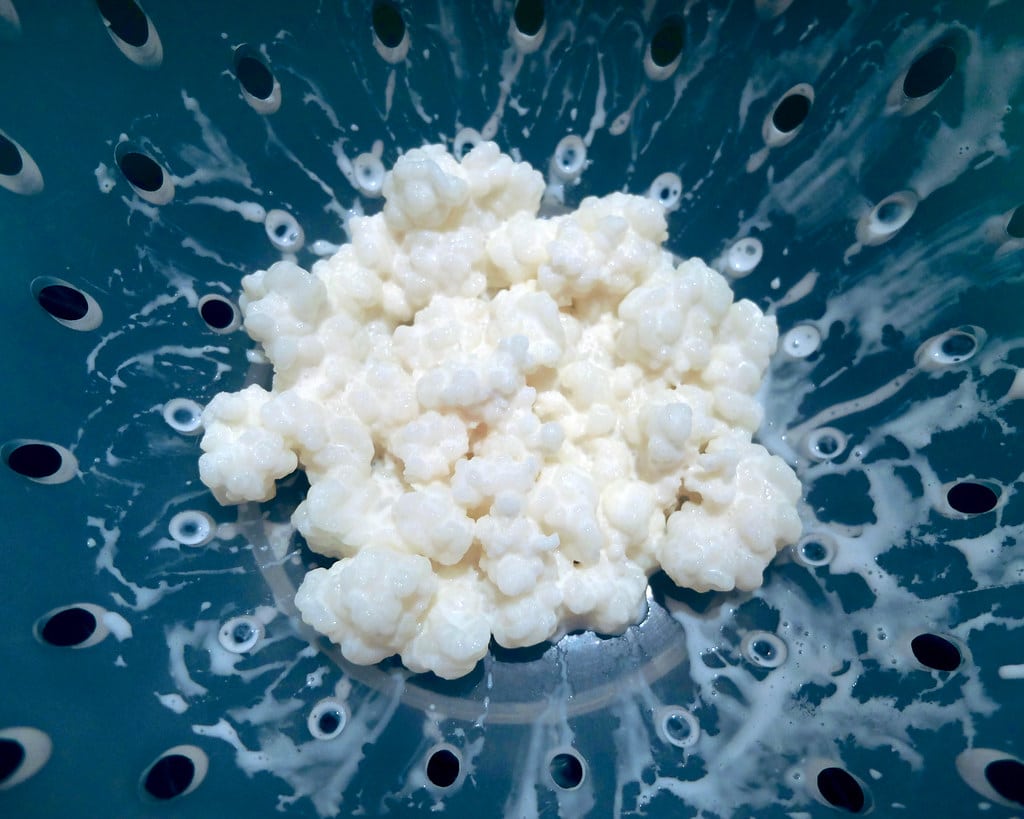Kefir is one of the most delicious homemade drinks which I have been enjoying over the past years. However, you may wonder whether kefir actually still contains some lactose that’s leftover from the milk. I wasn’t sure either so I did some research and here is what I found:
Kefir is nearly lactose-free. The bacteria that make up kefir grains break up and digest the lactose in milk. Therefore, only very little lactose is left in the milk after fermentation. Homemade kefir typically is 99.9% lactose-free.
But let’s look at this in a bit more detail! In this article, I’ll go over how much lactose actually is in kefir and whether it’s suitable for someone with lactose intolerance. We’ll also cover whether you can make kefir with lactose-free milk and finally, I’ll share some tips on how to reduce the lactose content in your homemade kefir.
Does kefir have lactose?
First things first: kefir is not 100% lactose-free. Although the symbiotic mix of yeast and bacteria in kefir grains breaks down most of the lactose in the milk there will always remain a small percentage of lactose that is not completely digested.
Depending on the type of kefir you buy there may be a higher or lower amount of lactose in the bottle. The best way to make sure to get the least amount of lactose in your kefir is to make it yourself at home.
Lactose-free Kefir Brands
However, if you prefer buying your kefir in stores instead of making it yourself there are some options. I’ve come across these two brands that advertise their kefir as lactose-free.
1. Green Valley Lactose-Free Organic Plain Kefir
In my opinion, the best option you have is from a brand called Green Valley. Their lactose-free kefir is made from organic milk and contains no additives.
If you wonder how they make their kefir lactose-free you can check their FAQ page here. Basically, it involves adding lactase enzymes to the milk before fermentation. This helps break down the lactose before and during the fermentation process.
The lactase enzymes which are added are naturally derived from vegetable yeast, according to Green Valley.
2. MEVGAL Lactose Free Kefir with Peach
The second option I found is from a Greek company called MEVGAL which produces lactose-free kefir that apparently only comes in a peach flavor. As you can probably already guess this is not my favorite since it includes artificial flavoring.

Furthermore, I could also not find any information on how exactly the company makes the kefir lactose-free. If you have to buy your kefir from a grocery store then I’d definitely recommend the Green Valley one.
Is kefir suitable for lactose intolerance?
Since even regular kefir contains so little lactose, to begin with, people with lactose intolerance can usually tolerate regular non-lactose-free kefir just fine.
You would have to drink an enormous amount of kefir just to get the same lactose content that you get with one glass of whole milk.
Can kefir be made with lactose-free milk?
You cannot make kefir with lactose-free milk since the bacteria in kefir grains need to survive. Without lactose, there would be no fermentation process happening and you would simply end up with lactose-free milk.
However, there are some other simple ways to reduce the lactose content almost down to zero.
How to reduce the lactose content in kefir
Since making stuff at home is almost always the better option (plus it’s fun) I will go over some ways here to reduce the lactose content in your home-fermented kefir:
- Stirring: A super simple way to reduce the lactose content in kefir is to stir the fermenting milk in the jar. This will make sure that the kefir grains (and thus the bacteria) are evenly distributed throughout the milk and can break down as much lactose as possible. Just make sure to use a wooden or plastic spoon, not a metal one!
- Longer Fermentation: Another easy way to reduce lactose content is to simply let your kefir ferment longer. The longer the milk ferments, the more time the bacteria have to digest all the available lactose. Sometimes I even let my kefir sit for 48 hours before removing the grains.
- Second Fermentation: A second fermentation is the process of removing the kefir grains and then letting your fermented drink sit for another 24 hours. Since there are still some bacteria present the fermentation will continue but at a much gentler pace. This is also sometimes referred to as maturing the kefir.
And there you have it! Three really easy ways to even further reduce lactose content in your kefir and make sure that it is nearly lactose-free when consumed.
I really love my kefir with a second fermentation! Not only does all the lactose get eaten up but it also tastes so much better! 🙂
“The Kefir and the Colander” by keibr is licensed under CC BY-NC-SA 2.0

